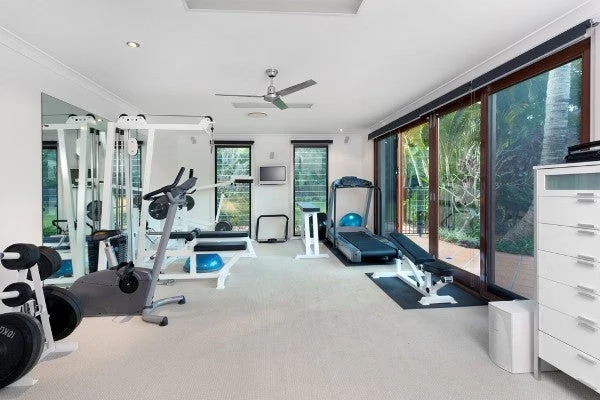For many people, the idea of creating a home gym feels exciting—until the overwhelm kicks in. Rows of machines, endless equipment options, and marketing buzzwords can make you feel like you need a full-size fitness studio to get started. But the truth is, building a home workout setup is less about having a huge space and more about choosing the right tools for your goals and lifestyle.
Whether you live in a small apartment, a busy family home, or a place with a spare room ready to transform, you can assemble a highly effective fitness space with just a bit of thoughtful planning. This guide walks you through selecting equipment that fits your needs, environment, and long-term goals—without the confusion or unnecessary spending.
Start With Your Fitness Goals (Not the Gear)
One of the most common mistakes people make is buying equipment based on trends rather than purpose. Think of it like going grocery shopping without a list—you end up with items you don’t need and forget the ones that matter.
The smartest way to begin is by asking a few personal questions:
- What type of training feels natural to me?
Some people love strength training, while others gravitate toward cardio or flexibility work. - What results am I looking for?
Fat loss, muscle gain, mobility improvement, or simply staying active? - How much time do I realistically have each week?
A busy professional might want compact tools for short, intense sessions, while someone with flexible time might opt for larger multi-use machines.
Your goals will decide what stays on your list and what gets filtered out. For instance, a parent juggling work and household duties may benefit more from resistance bands and adjustable weights than a giant treadmill. Meanwhile, a strength-focused user could prioritize free weights, kettlebells, or a sturdy bench.
Measure Your Space Before You Shop
Space planning is one area where people underestimate the importance of the details. It’s similar to planning a kitchen—if the appliances don’t fit, nothing flows smoothly.
Here are some quick guidelines:
- Small apartments
Opt for foldable benches, compact dumbbells, resistance bands, or doorway pull-up bars. These allow you to pack up your workout area in minutes. - Medium spaces (e.g., a bedroom corner or garage section)
You can incorporate a rack, adjustable dumbbells, or a stationary bike without overwhelming the area. - Large rooms or dedicated home gyms
Multi-station machines, barbells with racks, full-length mirrors, or larger cardio equipment become feasible.
Remember to check ceiling height, especially for overhead presses or jump-based exercises. People often forget that some movements require vertical clearance.
Pro tip: Tape the floor layout with masking tape to “preview” how equipment will fit before you buy. This technique is commonly used in interior design and works well in fitness spaces, too.
Choose Equipment That Offers Maximum Versatility
If you’re building from scratch, your goal should be to get the most function out of the least amount of space. This is where high-return equipment shines.
Here are some examples of versatile tools that suit almost any environment:
1. Adjustable Dumbbells
These replace an entire rack of fixed weights. Great for strength, toning, and even rehab exercises.
2. Resistance Bands
Lightweight, portable, and suitable for full-body workouts. They’re especially helpful for beginners or anyone recovering from injury.
3. A Foldable or Compact Bench
This allows you to perform dozens of exercises without dominating your room.
4. A Yoga Mat
Often overlooked, but essential for stretching, core work, and stability exercises.
5. A Cardio Option You Enjoy
This could be a jump rope, a rowing machine, a stationary bike, or a compact treadmill. What matters is consistency—choose something you genuinely like using.
6. A Power Rack (If You Have Space)
For weight-training enthusiasts, a rack significantly expands your training possibilities.
To understand why versatility matters, consider the concept of strength training, which has an established history and research background. A single well-chosen tool can support dozens of movements that strengthen multiple muscle groups at once, instead of relying on big, single-purpose machines.
How to Shop Smart Without Overspending
Once your list is ready, the next step is choosing where and how to purchase your equipment. Budget plays a huge role here, but the trick is not always about spending less—it’s about spending wisely.
Here’s what to consider:
1. Buy Based on Durability, Not Aesthetics
Shiny designs look appealing, but what matters is quality. Check the material, frame stability, weight capacity, and user reviews.
2. Look for Multi-Function Features
For example, adjustable benches that incline and decline, or dumbbells that replace a full rack.
3. Don’t Underestimate Compact Options
Many modern designs merge portability with performance. This makes them perfect for smaller living spaces or shared rooms.
4. Think Long-Term, Not Just for a Month
Choosing the right home gym equipment from reliable stores ensures you’re not replacing things every year. Consistency is easier when your setup feels good and lasts.
5. Start Small and Upgrade Later
You don’t need everything at once. A pair of dumbbells, a mat, and bands can carry you through hundreds of workouts. Layer more advanced items as your routine grows.
Design Your Space for Motivation, Not Just Function
Beyond the physical layout, your environment affects your mindset. Think of how offices use lighting and layout to boost productivity. Your home gym benefits from the same approach.
Here are practical ways to make your space feel inviting:
- Good lighting: Natural light boosts mood and energy. If that’s not available, use bright, soft LEDs.
- Mirrors: They help with form and make small spaces feel bigger.
- Storage: Simple racks, baskets, or wall hooks keep equipment tidy.
- Personal touches: A small speaker, motivational poster, or plants can make the space feel like “your zone.”
- Ventilation: A fan or open window keeps workouts comfortable.
You’d be surprised how much more motivated you feel when the area looks clean, bright, and intentional.
Test, Adjust, and Build Over Time
Your home gym is not a one-time project—it evolves. As your goals shift, your schedule changes, or your fitness level improves, you’ll naturally adjust your equipment choices.
A beginner might start with bands and a mat, then add weights later. A strength-focused user might begin with a barbell and eventually incorporate cardio tools to support endurance. A busy professional might switch their routine from mornings to evenings, or compact their setup to improve workflow.
The most successful home gym builders treat the process like cultivating a garden: you start with the basics and refine as you grow.
Final Thoughts
Choosing the best setup for your home gym isn’t about copying what you see online or buying the trendiest machine. It’s about designing a space that supports your goals, your lifestyle, and the environment you live in. With the right mindset and smart planning, you can create a flexible, motivating workout area without needing an oversized room or a massive budget.
Start simple. Build gradually. And choose equipment that makes you feel strong, capable, and excited to show up—whether you have five minutes or fifty.






